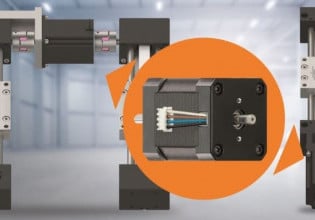H
We have our frame-6 GT tripped on low lube oil level. Found the lube oil IGV tubing burst. This tubing burst we think due to rubbing between the tubes which is due to high vibration between the tubing.
We studied the cause of this high vibration which leaded to tubing burst and think two reasons:
1- May be due to oil pressure to the IGV Actuator is not stable as we have fluctuation in it in range of 3 bar. This reading after the pump as there is no reading after the accumulator, and our operation team think this fluctuation is not too high and can not lead to the problem.
2- Another point of view that, the vibration due to a problem in the IGV Actuator itself that due to its travel adjustment nut is not locked properly. that leaded to the actuator fluctuating and vibrating strongly leading to the oil tubing rubbing with each other. This investigation as we found actually the traveling nut of the IGV actuator loose, but I told them this loose due to the non-stability of the oil pressure during oil rubbing as the pressure was fluctuating highly at that time in range of 10 bar so the nut became loose.
Now there is a confusion which come first and leaded to the other? The actuator problem leaded to the tube rubbing and oil bursting or the oil bursting leaded to the IGV actuator problem.
I appreciate to get the point of views of the experts. I want to know also what is the accepted limit of the oil pressure fluctuation to the IGV. Also we have YF 7645 series IGV actuator. I can see one big nut for the travel adjustment, but how to lock this nut after travel adjustment? there is no pin hole in it or no other Nut to lock it, So how to lock it?
Thanks and best regards
We studied the cause of this high vibration which leaded to tubing burst and think two reasons:
1- May be due to oil pressure to the IGV Actuator is not stable as we have fluctuation in it in range of 3 bar. This reading after the pump as there is no reading after the accumulator, and our operation team think this fluctuation is not too high and can not lead to the problem.
2- Another point of view that, the vibration due to a problem in the IGV Actuator itself that due to its travel adjustment nut is not locked properly. that leaded to the actuator fluctuating and vibrating strongly leading to the oil tubing rubbing with each other. This investigation as we found actually the traveling nut of the IGV actuator loose, but I told them this loose due to the non-stability of the oil pressure during oil rubbing as the pressure was fluctuating highly at that time in range of 10 bar so the nut became loose.
Now there is a confusion which come first and leaded to the other? The actuator problem leaded to the tube rubbing and oil bursting or the oil bursting leaded to the IGV actuator problem.
I appreciate to get the point of views of the experts. I want to know also what is the accepted limit of the oil pressure fluctuation to the IGV. Also we have YF 7645 series IGV actuator. I can see one big nut for the travel adjustment, but how to lock this nut after travel adjustment? there is no pin hole in it or no other Nut to lock it, So how to lock it?
Thanks and best regards






